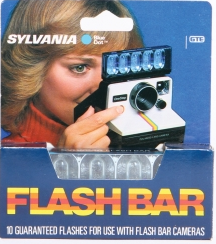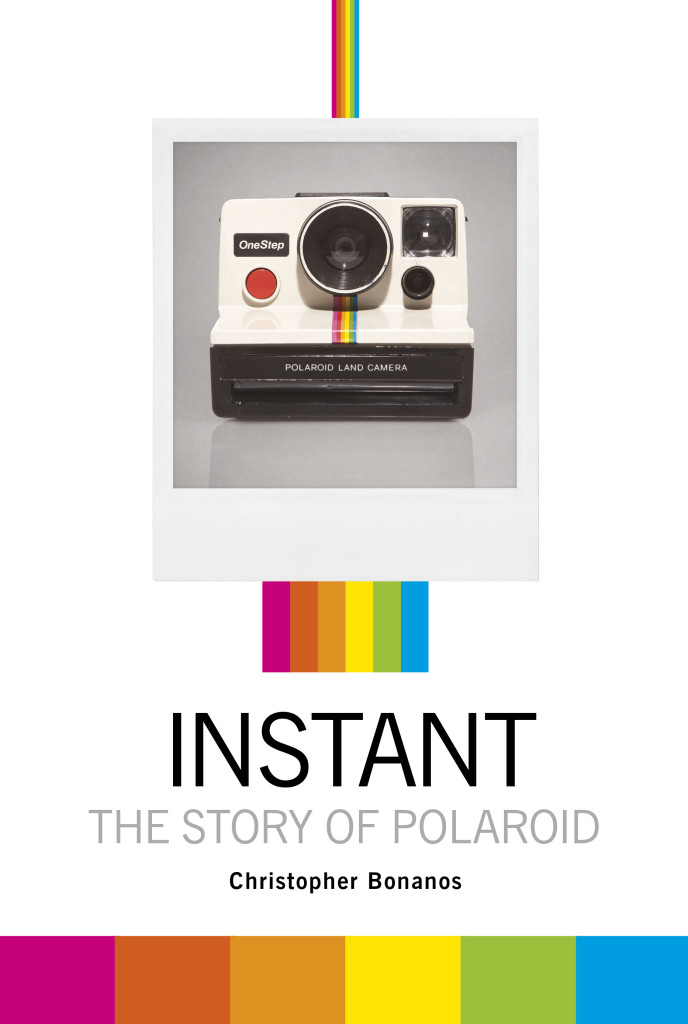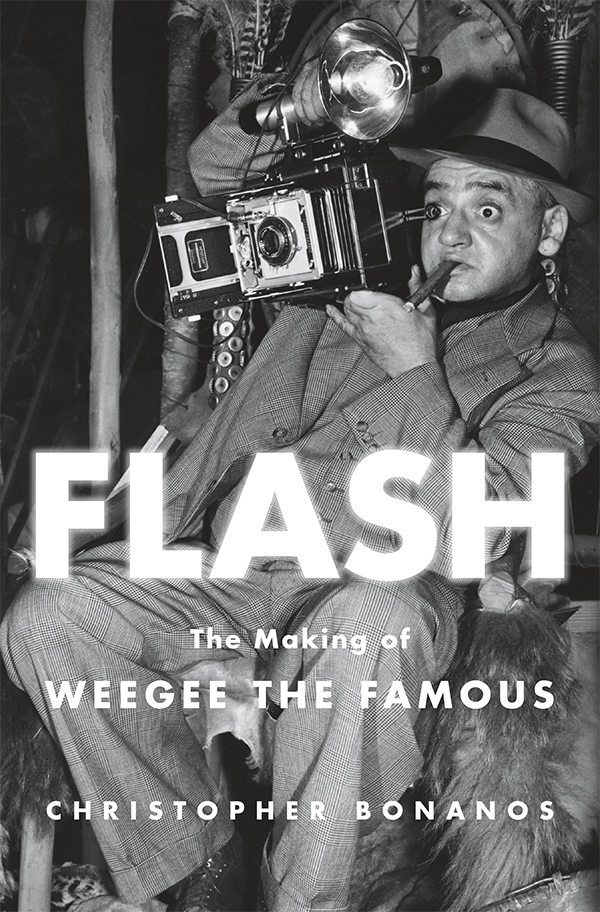I’ve posted about Elsa’s work before, but we’d never met till this weekend, when she was in New York. Long great conversation about lots of Polaroid people and Polaroid pictures and Polaroid memories. And even though I am self-conscious about taking pictures of real photographers, I did screw up my courage and made a snapshot. She was nice enough to say she liked it.
 There’s a well-written homage to the SX-70 in the March issue of Smithsonian magazine. (I suspect we’ll see a few appreciations like this in the spring, because April marks the fortieth anniversary of the product introduction.) Online version here; good thread of comments about it at Boing Boing.
There’s a well-written homage to the SX-70 in the March issue of Smithsonian magazine. (I suspect we’ll see a few appreciations like this in the spring, because April marks the fortieth anniversary of the product introduction.) Online version here; good thread of comments about it at Boing Boing.
 Since I started using an SX-70 camera, I’ve found one thing particularly frustrating: the flash situation. SX-70s were designed to use disposable Flashbars, which are long out of production. If you want to shoot indoors, you have three choices: (a) find vintage Flashbars, probably on eBay, for something like $10 apiece once you factor in shipping; (b) use the electronic flashes designed by various manufacturers back in the seventies, which are almost all bulky and rob the folding camera of its portability, or (c) skip the flash, use a tripod, and have people sit still, like you’re making daguerreotypes. All have their obvious drawbacks.
Since I started using an SX-70 camera, I’ve found one thing particularly frustrating: the flash situation. SX-70s were designed to use disposable Flashbars, which are long out of production. If you want to shoot indoors, you have three choices: (a) find vintage Flashbars, probably on eBay, for something like $10 apiece once you factor in shipping; (b) use the electronic flashes designed by various manufacturers back in the seventies, which are almost all bulky and rob the folding camera of its portability, or (c) skip the flash, use a tripod, and have people sit still, like you’re making daguerreotypes. All have their obvious drawbacks.
Since the seventies, however, electronic strobes have become much smaller. It has seemed to me that someone ought to build a unit no larger than the old Flashbar, with the right fitting and circuitry to mate with the SX-70’s port. I even took a few steps in this direction once, trying to hack one out of the flash from a disposable camera. My electronics skills weren’t up to the job, and the capacitor gave me a severe shock, after which point I put the parts in a box and backed slowly away, never to return to the project. (Still have them, however.) I have idly thought, a few times, that I should get an electrical engineer to design one, have it made somewhere in the Far East, and offer it for sale online to the small but enthusiastic Polaroid crowd. Polaroid itself even patented such a thing, to be called a Strobar, though it appears that only prototypes were produced.
Turns out that a Hong Kong company called Mint, working with The Impossible Project, had more initiative than I did. Yesterday, Impossible (via Twitter) gave us a quick look at the product, and it is exactly what I had been trying to build myself.
Better, in fact, because it has an intensity-adjustment slide switch on the back. Web reports say it’s going to be about $100, which is a lot but not crazy.
If they took preorders, I’d have placed one today. I’m actually a little giddy over this. There’s nothing like wanting a very specific piece of equipment that does not exist, and then discovering that someone else went and designed exactly what you had in mind. Whee!
Update: It went on sale a couple of hours after this post went up. Buy here.
 I don’t know any Mandarin, and cannot tell you what is on Weilin Wang’s new site, located here. But I do know it’s a fan site devoted to instant photography, and (as I’ve written before) anything that keeps people shooting instant film is on the side of the angels. And you know what marketing types always say about selling in China: Given a billion-plus people, if everybody buys just one of your product…
I don’t know any Mandarin, and cannot tell you what is on Weilin Wang’s new site, located here. But I do know it’s a fan site devoted to instant photography, and (as I’ve written before) anything that keeps people shooting instant film is on the side of the angels. And you know what marketing types always say about selling in China: Given a billion-plus people, if everybody buys just one of your product…
Is it just me, or does the character he uses for “instant photography,” reproduced in the logo above, look a little like a camera ejecting a photo? And the two little strokes on the sides even give you the whirring-motor sound effect.
Anyone run across the word “skeuomorph” lately? It describes a visual vestige—a traditional form that reappears in some other context where it’s meaningless. For example, if an object was once made of leather pieces stitched together but is now made of molded plastic on which designers have added fake molded stitches, those seams are skeuomorphs.
Digital photography most definitely does not require a chemical pod at the bottom of the photo. Yet everywhere you look online, “casual snapshot” is conveyed by a white Polaroid frame.
In the New York Times’s real estate section:
On the Website of my own employer, New York magazine:
And even on eBay, when someone fails to add a photo to a sales listing:
More often than not, the frame is canted at a slight angle or given a digital drop shadow. My friend Mark points out that this helps convey the physicality of a Polaroid photo—that it’s an object as well as an image.
On this date in 1947, Edwin Land showed the world his invention.
It was at the dinner session of a meeting of the Optical Society of America at the Hotel Pennsylvania in New York. The event itself almost didn’t happen because of a huge snowstorm that nearly socked in the entire Northeast. That night at 7 p.m., though, a roomful of optics experts, ringed by a few wet and grumpy newspapermen, saw Land shoot an 8-by-10-inch photo of himself, run negative and paper through a pair of motorized rollers, and reveal a sepia print 50 seconds later. His colleague Peter Wensberg later noted that Land was terrified that that the experimental system (successfully tested dozens of times in private) would fail in public, and in fact the photos of him early in the demonstration show a certain tightness in his face. It all worked, though, and a few minutes later, he was laughing and joking with the reporters as he gleefully ran out print after print.
LEGALITIES
This site is not connected with or endorsed by Polaroid or PLR IP Holdings, owners of the Polaroid trademark.ON TWITTER
My TweetsBlogroll
- 'Insisting on the Impossible'
- Everything Reminds Me of You
- Flickr's Polaroid group
- Instant Options
- LandCameras.com
- Paul Giambarba: Analog Photography At Its Best
- Paul Giambarba: The Branding of Polaroid
- Polaroid
- Polaroid SF
- Rare Medium
- The Impossible Project
- The Land List
- The New55 Project
- Vintage Instant












